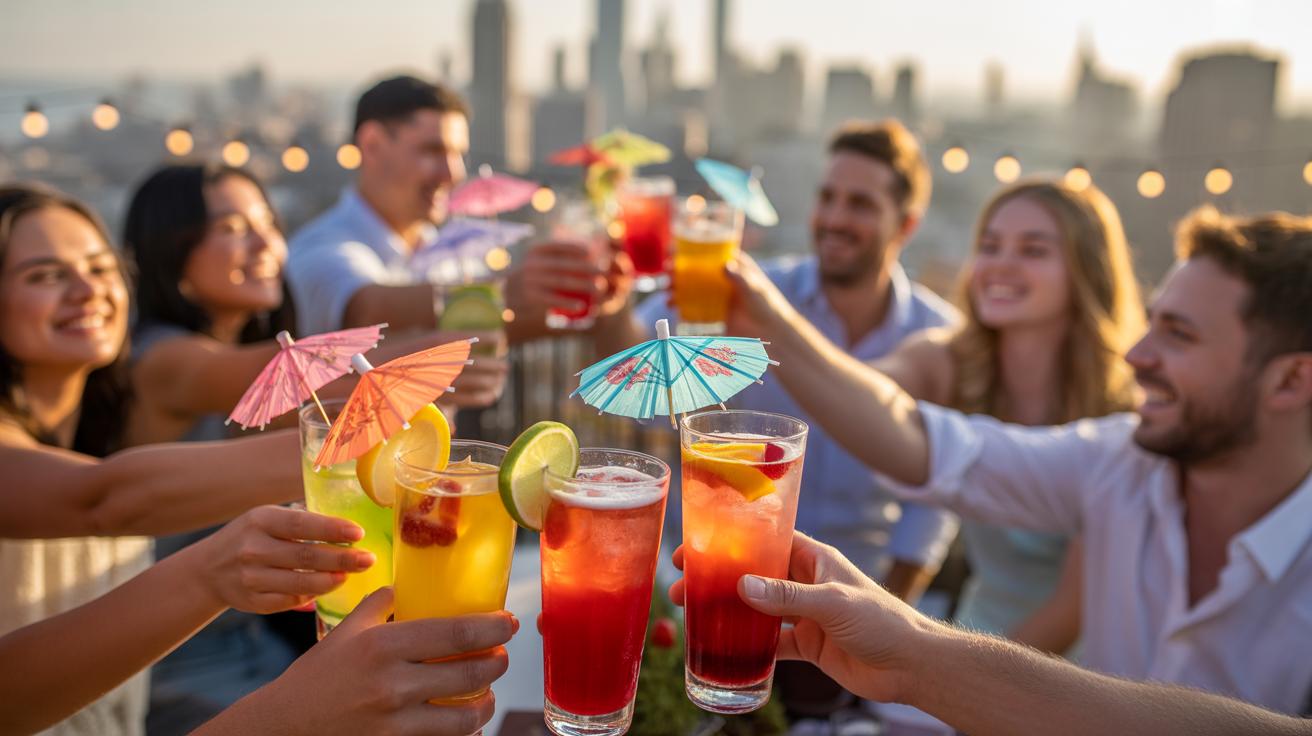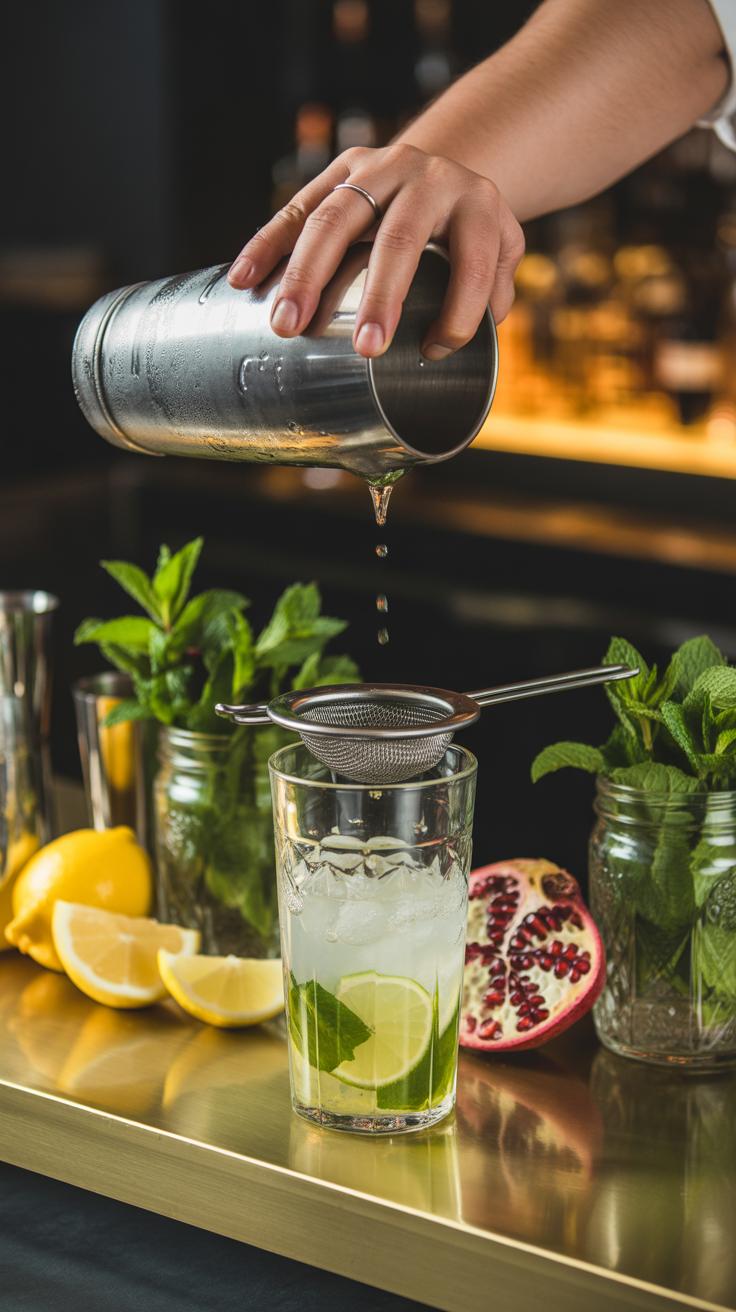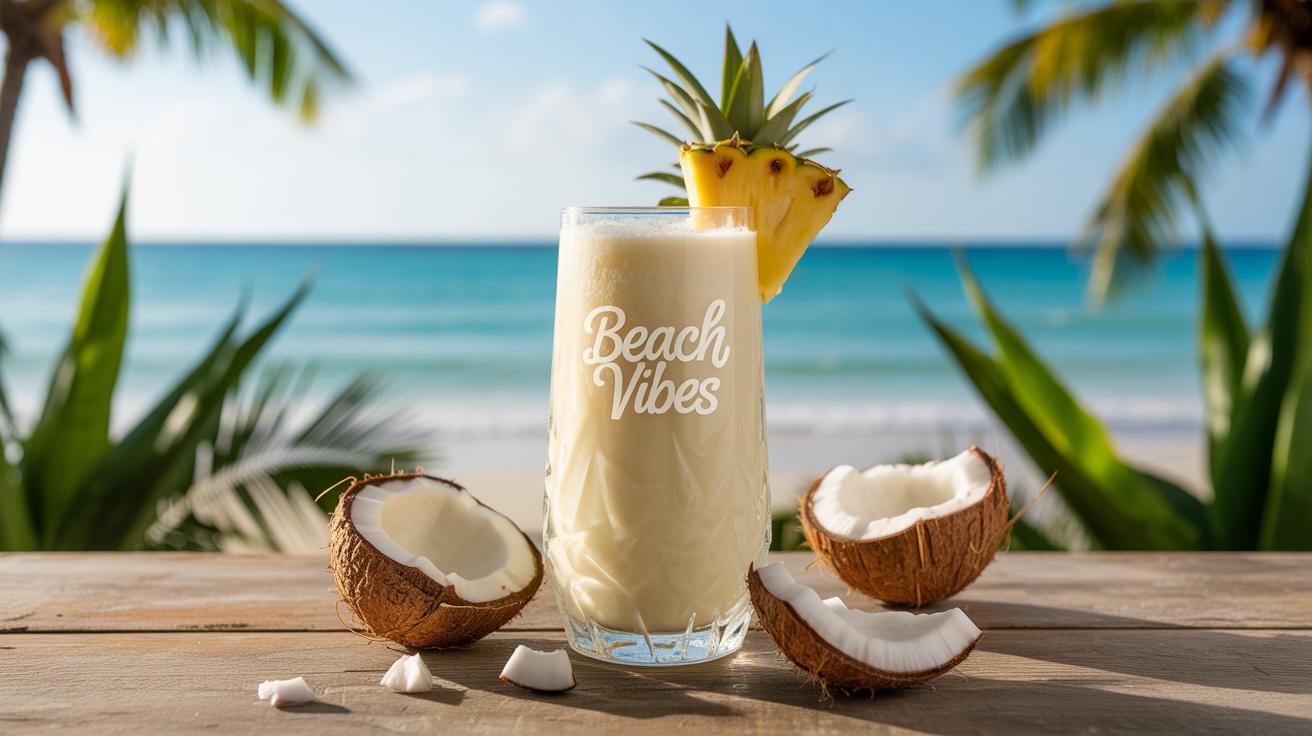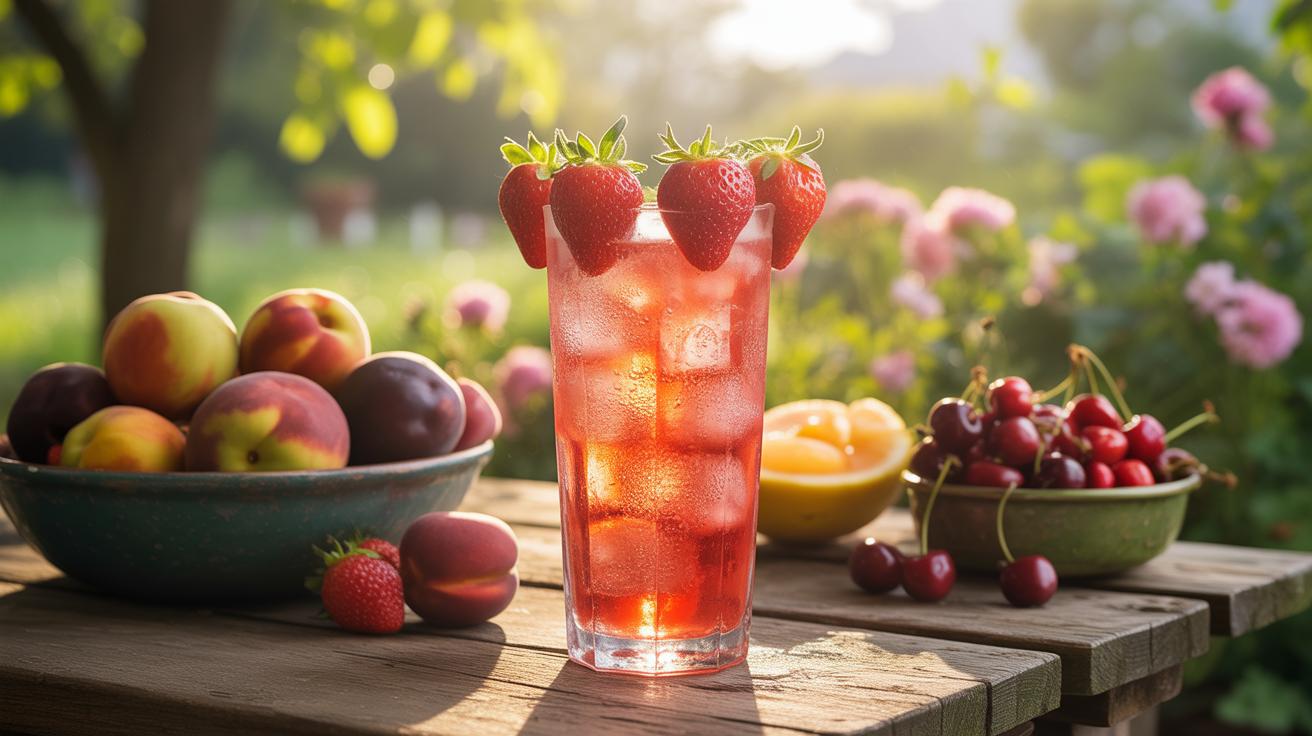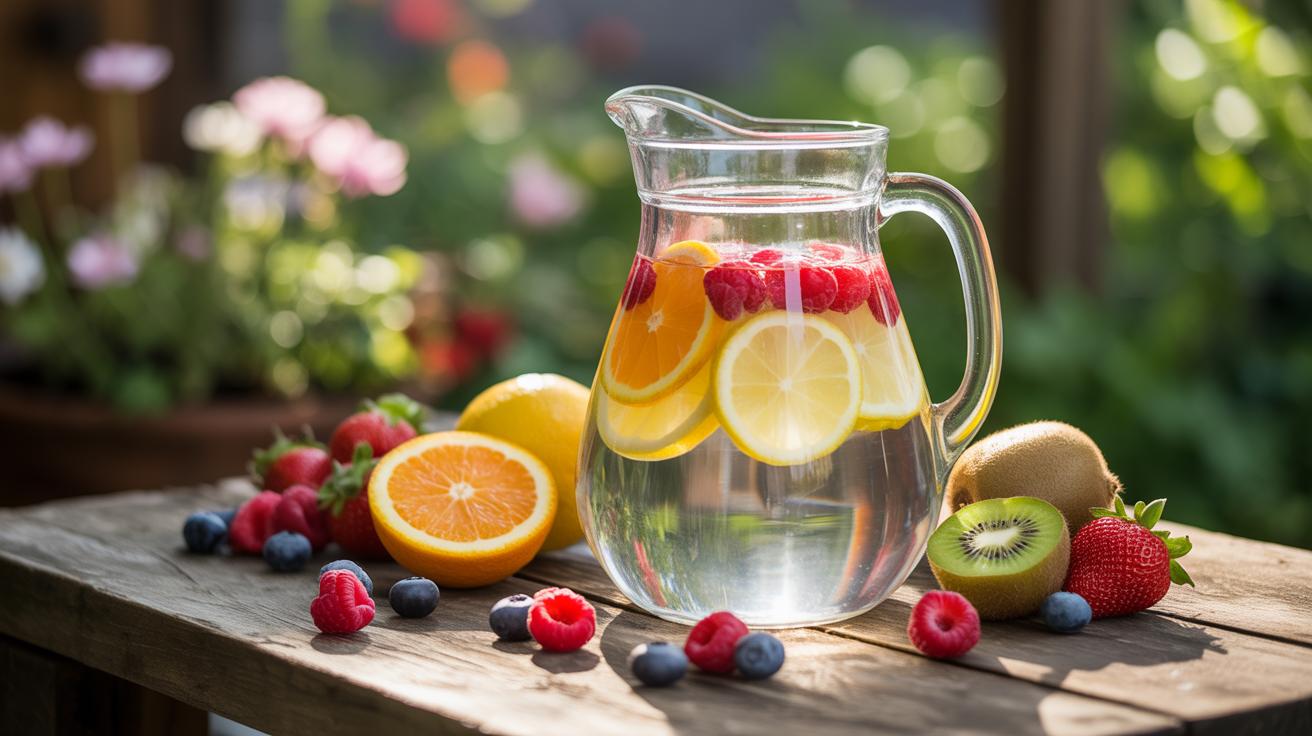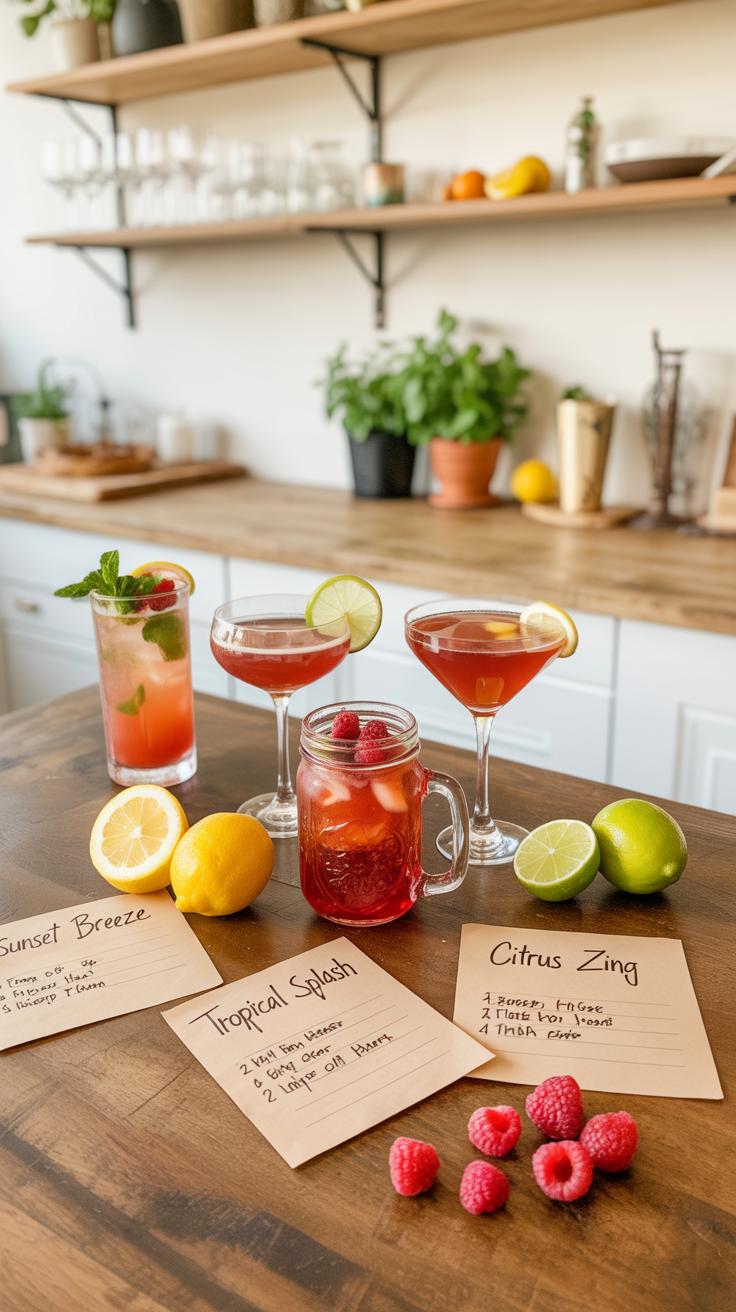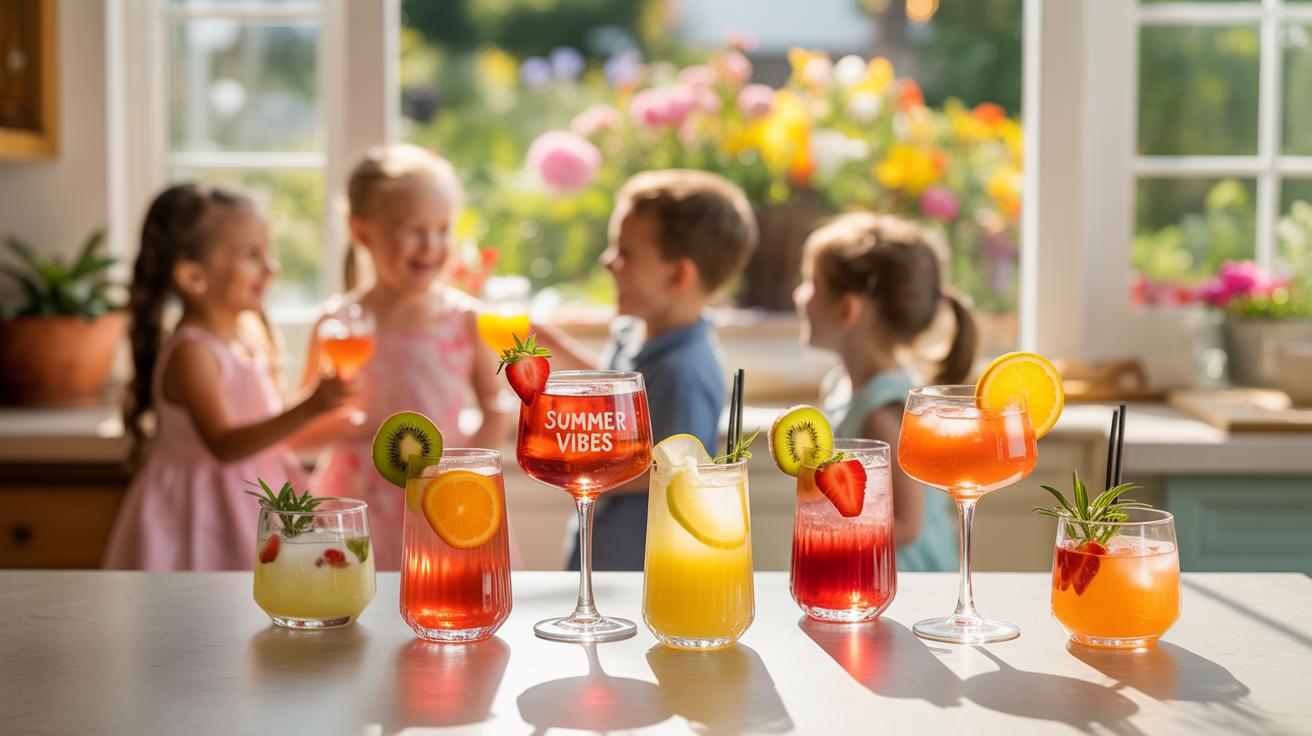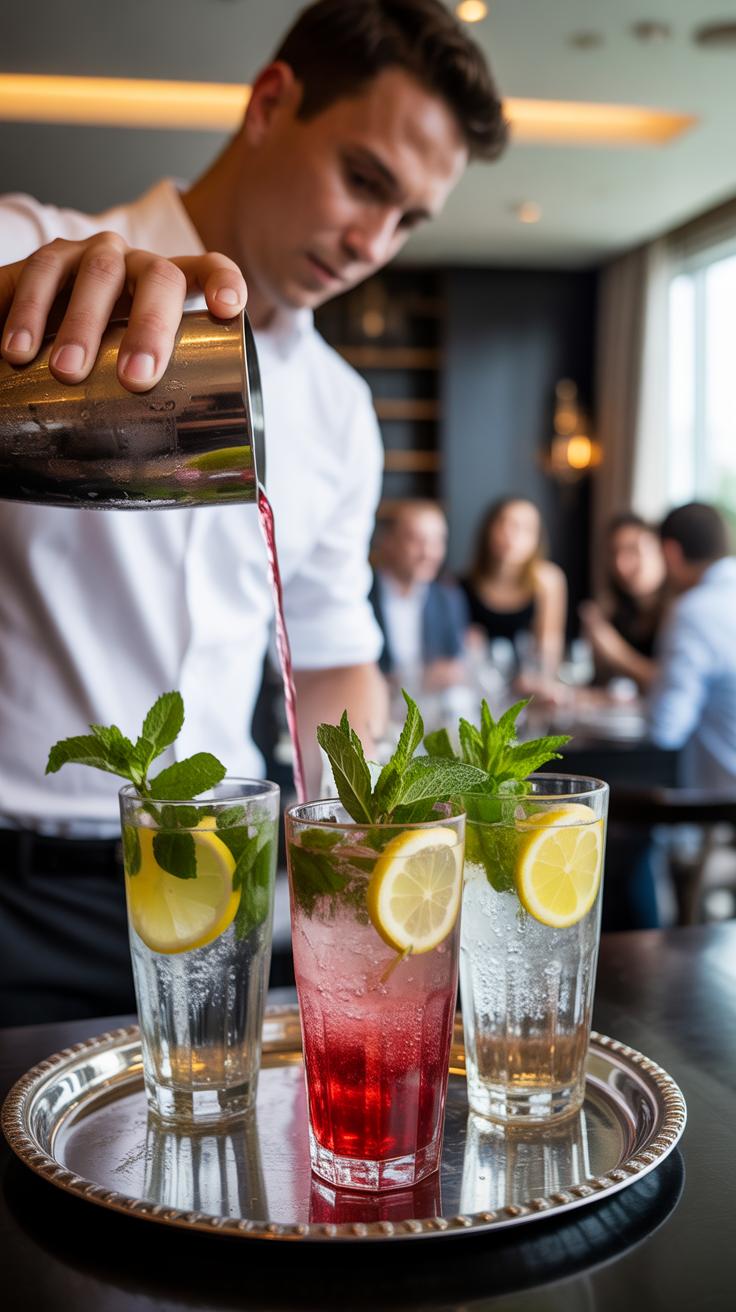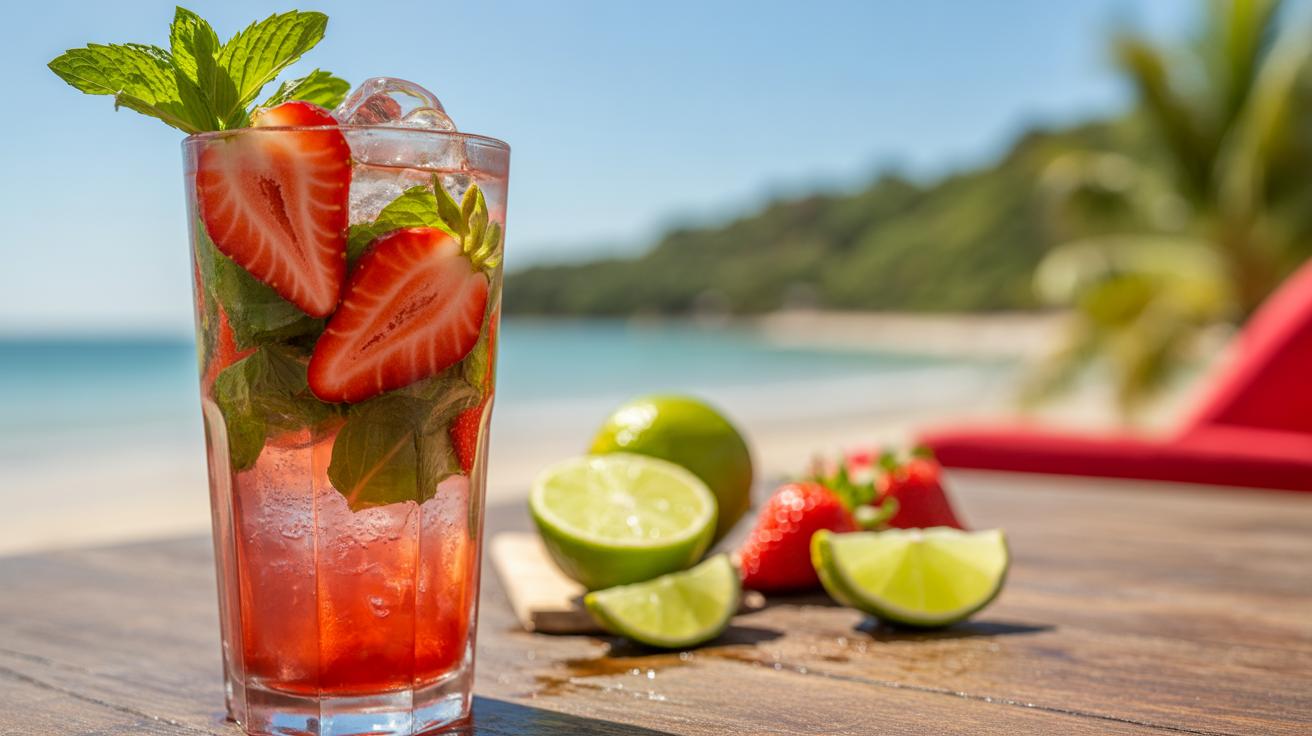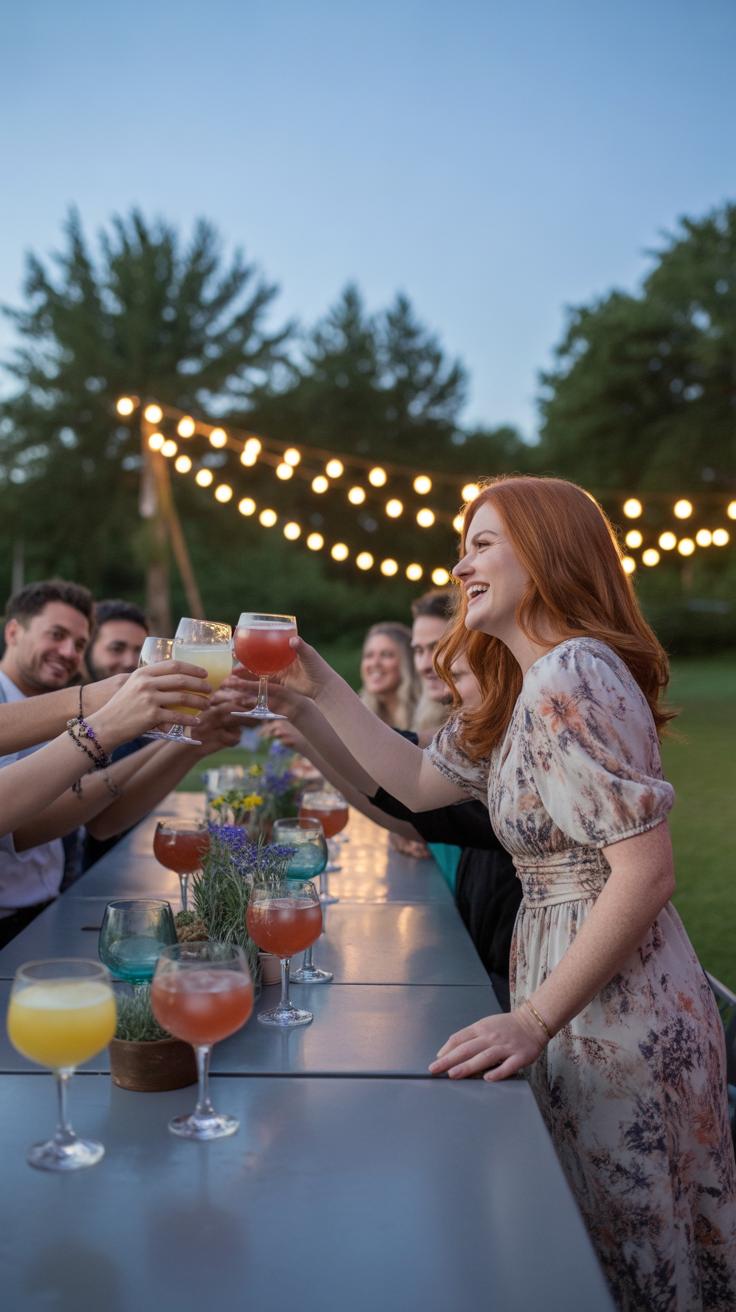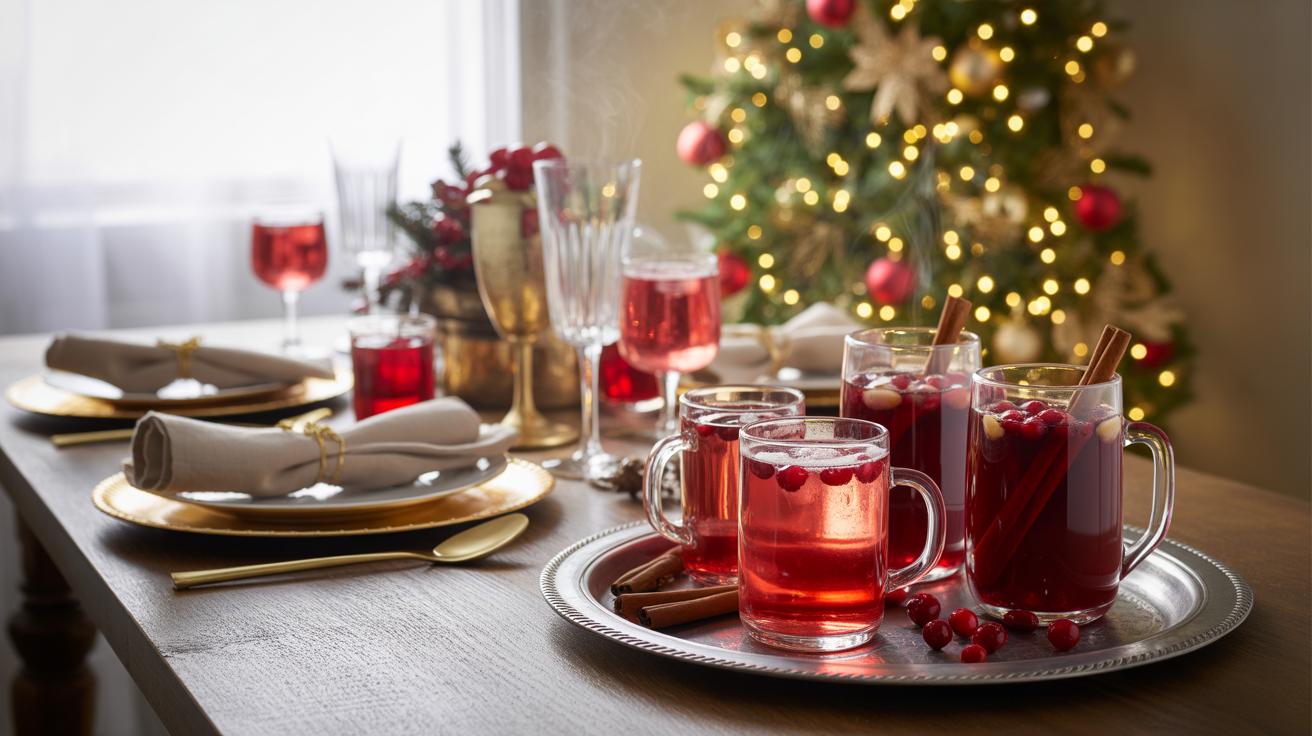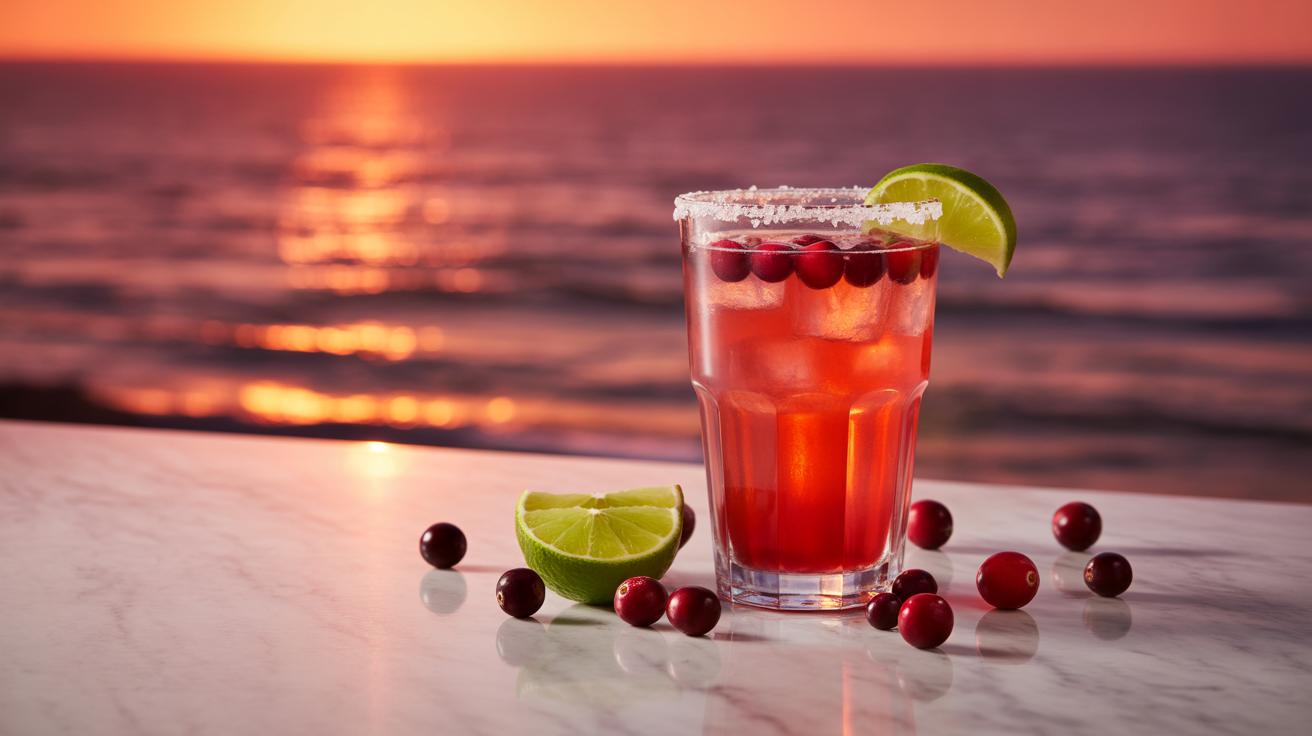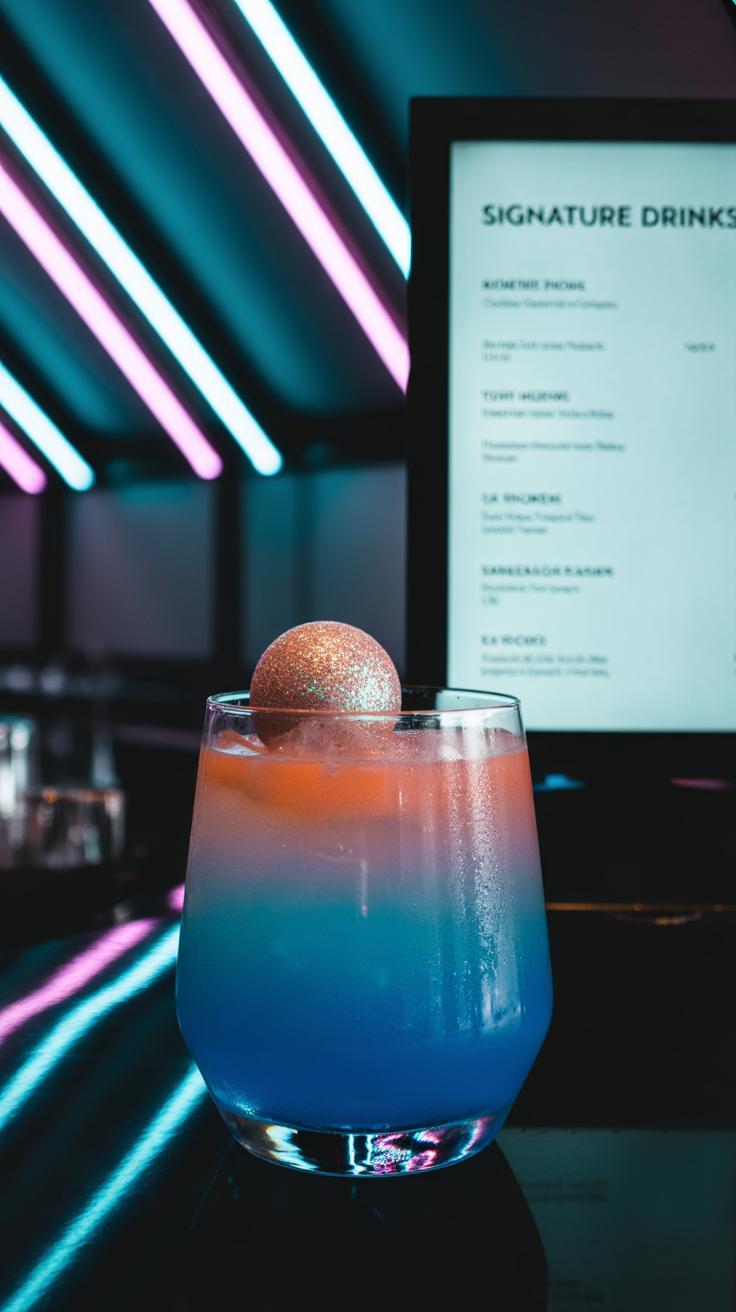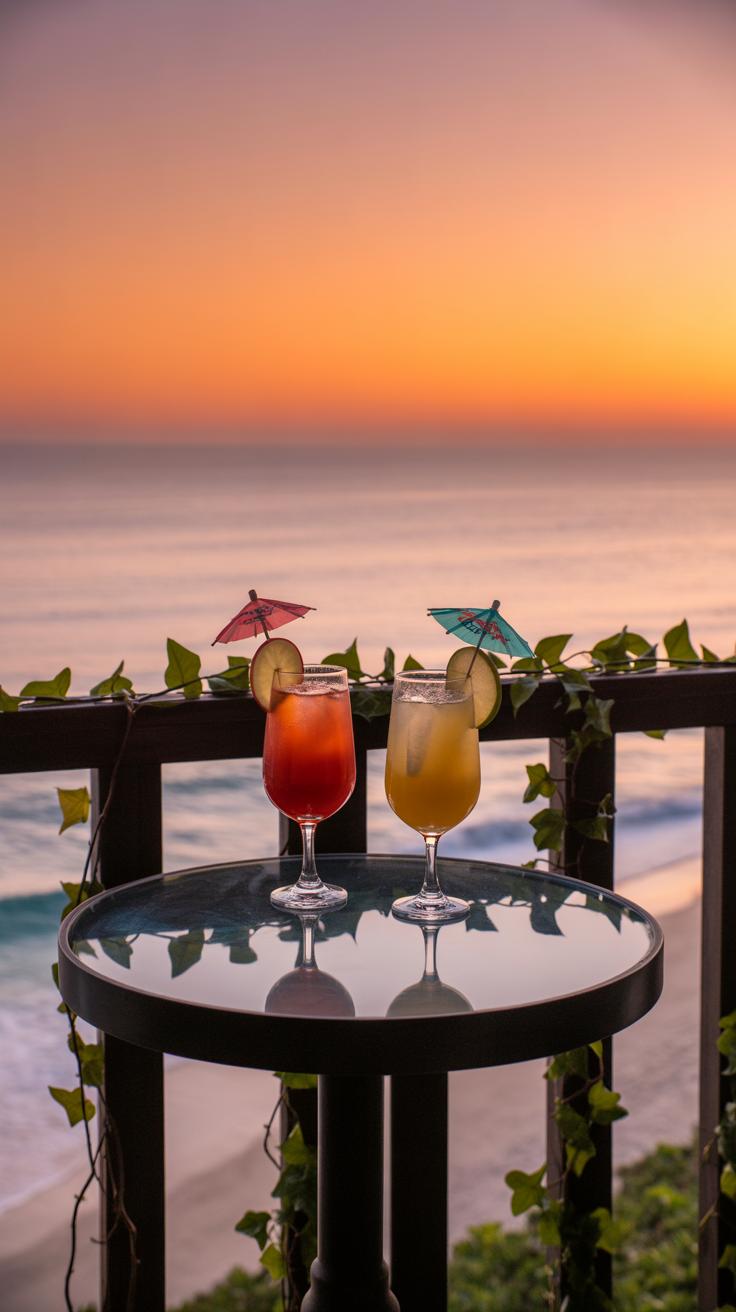Introduction
Non alcoholic cocktails are a perfect choice for social gatherings. They offer all the fun and flavor of traditional cocktails, but without any alcohol. This makes them suitable for everyone, including drivers, pregnant women, and those who simply prefer to avoid alcohol. In this article, you will discover a variety of non alcoholic cocktails that can brighten up any party or event.
We will explore the benefits of non alcoholic drinks, popular recipes, tips for preparation, and ideas to make your gatherings memorable. Whether you are hosting a party or attending one, these drinks ensure everyone can enjoy a refreshing beverage. Join us as we dive into the world of tasty and creative non alcoholic cocktails.
Understanding Non Alcoholic Cocktails
Non alcoholic cocktails are drinks crafted to deliver the same complexity and enjoyment of traditional cocktails—just without the alcohol. Think of them as a mix of different flavors, textures, and aromas carefully combined to offer a satisfying experience. They often include fruit juices, herbs, spices, syrups, and more recently, specialized non alcoholic spirits.
What sets them apart? Unlike typical cocktails built around liquor, these zero-proof drinks focus purely on flavor and refreshment. You won’t find vodka or rum here, but you might find creative blends designed to mimic those profiles in subtle ways.
The idea isn’t new—variants of non alcoholic mixed drinks have been around for a long time, but their presence in social scenes has grown noticeably. More people now seek options beyond beer or wine, especially when socializing, reflecting shifting tastes and priorities. Maybe you’ve noticed menus at bars listing mocktails or zero-proof options. That wasn’t common a decade ago.
While casual gatherings once seemed dominated by alcohol, nowadays the scene feels more inclusive—welcoming people who for one reason or another prefer to skip the buzz but still want to enjoy the ritual of a well-made drink.
What Makes a Cocktail Non Alcoholic
At its core, a non alcoholic cocktail depends on ingredients that bring excitement and balance without any booze. You’ll see things like:
- Fresh fruit juices—orange, pineapple, cranberry, and so on.
- Syrups—simple syrup, flavored syrups like vanilla, ginger, or lavender.
- Herbs and spices—mint, basil, rosemary, cinnamon, designed to add complexity.
- Non alcoholic bitters and spirits—these are newer but help provide the aroma and mouthfeel of alcohol.
The phrase “zero-proof” is often used to describe such drinks, emphasizing their lack of alcohol content. The focus is on building layers of flavor that engage the senses in a similar way traditional cocktails do, without relying on intoxicating effects.
For instance, a good non alcoholic mojito still balances tart lime, fresh mint, sweetness, and a fizzy touch from soda water—you just won’t find rum in the mix. It’s about savoring taste rather than getting a buzz.
History and Popularity
Non alcoholic cocktails didn’t suddenly appear; their roots trace back to early soda fountains and temperance movements where alcohol was deliberately avoided. For many years, options felt limited—mainly soft drinks or simple fruit punches.
Recently, the growth has exploded. This rise links to multiple factors:
- A greater focus on wellness and mindfulness about alcohol consumption.
- Cultural shifts encouraging inclusivity and accommodating diverse preferences.
- Improved craftsmanship in making these drinks—bartenders experimenting with flavors like chefs, turning them into something worth savoring.
Social gatherings now often include those who might be sober, pregnant, young, or simply choosing to stay clear of alcohol. Offering well-made non alcoholic choices means more people can feel part of the celebration without feeling left out.
It’s interesting to wonder—will these drinks keep evolving and maybe even rival traditional cocktails in status one day? Some places suggest yes, with entire menus devoted to zero-proof options and bartenders dedicated to mastering this craft.
Benefits of Non Alcoholic Cocktails
Non alcoholic cocktails offer some clear perks, especially when you think about health and safety. For one, they help you dodge all the usual risks tied to alcohol—like hangovers, impaired judgment, or longer-term health issues. This is a real advantage for anyone who can’t or doesn’t want to drink alcohol. Take pregnant women, for example, or folks who need to drive afterwards. It creates a safer environment without anyone feeling left out.
People with certain health concerns—like liver conditions, medication restrictions, or even just trying to cut down on calories—often appreciate having flavorful options that don’t include alcohol. It’s surprising how much variety and satisfaction non alcoholic cocktails can bring, without the downsides.
Then there’s the social side. Offering non alcoholic drinks signals respect for different lifestyles and choices. It helps normalize alternatives instead of making them seem like second best. It’s about giving everyone a seat at the table, whether they drink or not. You might notice a friend who usually looks uneasy at parties feels more relaxed when there’s something interesting to sip on.
Also, taste often gets overlooked. Non alcoholic cocktails aren’t just watered-down versions of traditional drinks. They can deliver fresh, bold flavors that stand on their own and enhance the gathering’s atmosphere. When crafted thoughtfully, they become a highlight rather than a fallback.
Popular Non Alcoholic Cocktail Recipes
When it comes to social gatherings, having a handful of popular non alcoholic cocktail recipes at your disposal can be a real lifesaver. These drinks are simple, familiar, and usually enjoyed by most people—even those who might not be fully committed to going booze-free. The classic virgin mojito, for example, combines fresh mint, lime juice, sugar, and sparkling water. Its bright, zesty flavor keeps things lively without the alcohol punch. It’s refreshing and pretty hard to mess up, which probably explains why it’s a party staple.
The Shirley Temple is another go-to. Made with ginger ale or lemon-lime soda, grenadine, and a maraschino cherry, it’s sweet but never cloying. And there’s something nostalgic about it—maybe that’s why adults and kids alike reach for it. Then there’s the non alcoholic piña colada, mixing coconut milk, pineapple juice, and ice, whisked together for that tropical vibe. It’s creamy and a bit indulgent, which spices up any gathering.
If you’re looking to impress with something a bit different, try mixing grapefruit juice with fresh rosemary and tonic water, garnished with a twist of lemon peel. The sharp citrus and herbal notes add an unexpected complexity. Or a blend of cucumber juice, lime, and a splash of elderflower cordial gives a cooling, delicate flavor in a pale green shade. These mocktails don’t just taste good—they look appealing too, adding to the fun of serving something special.
Have you ever noticed how the right garnish—like a sprig of fresh basil or an edible flower—can turn an ordinary drink into something memorable? Playing with color and presentation might seem a small detail, but it matters. It sets the mood, makes people curious. Sometimes, the most straightforward recipes become conversation starters, simply because they look inviting.
Choosing Ingredients for Quality Mocktails
When crafting non alcoholic cocktails, the choice of ingredients shapes the whole experience. Fresh fruits and freshly squeezed juices simply taste different—brighter, more vibrant, and less processed than bottled versions. Think about how a freshly squeezed lime or orange can lift a drink more than something from a carton. Fruits like berries, citrus, watermelon, and pineapple tend to work well—they have distinct flavors that hold up nicely when mixed.
Freshness isn’t just a nice-to-have; it really changes the flavor profile. If you’ve ever tried a mocktail with freshly muddled mint versus dried leaves, you know what I mean. Those little green sprigs release oils that canned or dried herbs just can’t match. Plus, fresh herbs like basil or thyme can add unexpected layers—sort of a subtle background note that surprises you as you sip.
Syrups and natural flavorings add depth, but the key is knowing what to pick. Ginger syrup gives a gentle spice, while rosewater adds floral tones that aren’t common but can be delightful if you happen to like them. Mint, lemon verbena, or even a touch of lavender syrup can elevate a simple lemon soda to something more thoughtful. You might sometimes find yourself wondering if you’re overdoing it with these extras—there’s a balance. Too much syrup or too many competing flavors can muddle the whole thing, so start small.
One thing I keep going back to: quality matters more than quantity. You don’t need a hundred mixers or exotic syrups. Instead, focus on a few ingredients that are fresh and appealing to your palate. It can transform a basic mocktail into something memorable.
How to Prepare and Serve Non Alcoholic Cocktails
Making non alcoholic cocktails doesn’t have to be complicated, whether you’re mixing a single drink or preparing for a crowd. Start with freshly squeezed juices or high-quality mixers to build your flavors. Ice plays a key role too—crushed ice chills quickly and melts faster, which can dilute flavors, so think about the balance you want. When preparing larger batches, premix base components in advance, but add anything carbonated or fresh herbs just before serving to keep the fizz and aroma lively.
Mixing Techniques
Shaking is great for incorporating ingredients like juice, syrups, and crushed ice to create a frothy, refreshing texture. Use a cocktail shaker or even a sealed jar if you’re short on tools. Stirring, in contrast, gently blends clear ingredients, preserving clarity and preventing dilution. Then there’s layering—pouring liquids of differing densities slowly to create visually distinct layers. It takes patience, but the effect is impressive and adds a wow factor to any drink. A small strainer or bar spoon can really help refine your mixing game, even for simple cocktails.
Presentation and Garnishing
How you serve your mocktails matters almost as much as how they taste. Choose glassware that suits the style—highball glasses for fizzy drinks, coupes for more refined blends. Garnishes are your chance to be playful: a twist of citrus peel, a sprig of mint, or edible flowers can brighten up a drink. And sometimes, a simple sugar rim or a skewer of fresh fruit pieces does the trick better than anything flashy. Think about the setting too—a rustic gathering might call for mason jars, while a more formal event benefits from elegant glassware and minimal garnish. Visual appeal can spark conversation and make the experience feel special.
Hosting a Social Gathering with Non Alcoholic Cocktails
Planning Your Drink Menu
When planning your menu, think beyond just a few fruity drinks. Try to offer a range that covers different tastes—some guests might like something sweet, others prefer tart or even a bit bitter. It’s tricky to strike a balance, but aiming for a mix of sweetness, acidity, and freshness works well.
Consider including options like a sparkling citrus blend, a creamy coconut mocktail, or a herb-infused cooler. This variety can satisfy those who want something light and those looking for more complex flavors. Don’t forget texture—adding fizz, ice, or even bits of fruit can change how a drink feels, not just how it tastes.
One thing I’ve found is that too many sugary drinks overwhelm the palate fast, so mixing in something crisp or herbal can help keep things from being one-note. You might want to test your lineup before the party, tasting each drink side by side to see if one stands out—or feels out of place.
Engaging Your Guests
Getting guests involved can make the gathering more memorable. Setting up a mocktail-making station invites a bit of fun experimentation. People enjoy crafting their own drinks, choosing flavors or garnishes that suit their mood. It also breaks the ice, literally and figuratively.
Alternatively, organizing a casual tasting session can spark conversation. Imagine a small flight of mocktails paired with simple snacks. Sharing first impressions can be surprisingly entertaining. It lightens the mood and shifts focus from just “drinking” to enjoying flavor discovery together.
What really matters is keeping things relaxed. There’s no need to overcomplicate it—sometimes simple, well-made drinks served with warmth do the trick better than anything flashy. Let your guests feel at ease to try new things, and don’t be afraid to share your own favorites or stories behind the recipes. That bit of connection often turns a good party into a memorable one.
Non Alcoholic Cocktails for Special Diets and Preferences
When hosting with non alcoholic cocktails, you might want to think about guests who follow specific diets. Some people avoid sugar, others want vegan options, and a few come with allergies. That doesn’t mean flavor needs to take a back seat; it just means tweaking recipes a bit.
For sugar-free choices, you can swap traditional syrups for natural sweeteners like stevia or monk fruit. They keep things sweet without the added calories or spikes in blood sugar. Coconut water or infused sparkling water often add subtle flavors without extra sugar, too. Vegan guests usually appreciate non-dairy creams made from oat or almond milk instead of heavy cream.
Allergen-friendly drinks might skip nuts or citrus ingredients. For example, instead of using almond milk, try rice or hemp milk. Or, use herbal infusions—like chamomile or ginger tea—to create complex flavors that don’t rely on common allergens. Sometimes people assume these adjustments dull the taste, but a little extra fresh herbs or a splash of quality fruit juice can balance the profile nicely. Taste doesn’t have to suffer at all.
Do you find yourself wondering if healthy ingredients can still make drinks exciting? Honestly, yes. It’s about experimenting with textures and layers, thinking beyond sweetness and adding in freshness or spice. Flavors can stand out even without alcohol or sugar when you mix thoughtfully. You might even discover new favorites you hadn’t considered before.
The Future of Non Alcoholic Cocktails
Trends in Drinking Culture
The rise of non alcoholic cocktails fits pretty well with today’s focus on wellness and what some call sober curiosity—the idea that maybe you don’t need alcohol to enjoy a night out. More people seem interested in cutting back or skipping alcohol for health reasons, but it’s not just about avoiding a hangover anymore. There’s a genuine shift in how people view socializing and self-care.
You might notice new bars cropping up that put zero-proof drinks front and center. They’re no longer an afterthought or a sad fallback option. Instead, these places often have menus as creative and thoughtful as any traditional cocktail bar. Plus, brands are launching non alcoholic spirits that taste closer to the real thing, which changes the game when you want something complex rather than just juice or soda.
Innovations in Ingredients and Techniques
It’s not just the drink options that are evolving. The tools and ingredients mixologists use are getting more interesting too. Non alcoholic spirits, distilled botanicals, and fermented bases now offer flavors you wouldn’t have found in mocktails even a few years ago.
Some bartenders are borrowing techniques from classic cocktail making—like barrel aging or fat washing—but applying them without alcohol. This opens up unexpected layers of flavor and texture. Have you tried a zero-proof drink that’s been smoked or infused? It can feel almost like a full-on cocktail experience.
The future is inviting people to rethink what a drink without alcohol can be. It’s not just a simple swap anymore; it’s a whole creative field, and that’s kind of exciting to watch unfold.
Tips for Enjoying Non Alcoholic Cocktails
When you bring a non alcoholic cocktail to a party or gathering, your mindset really shapes the whole experience. Instead of seeing it as “just a mocktail,” try to think of it as a drink with its own personality. You’re not missing out; you’re engaging with a different range of flavors that alcohol-heavy drinks don’t offer. Sometimes, this means slowing down and noticing subtleties—a hint of citrus, the floral notes from herbs, or the sweetness of fresh fruit. It’s a bit like paying close attention in ways most people don’t expect.
Pairing your drink with food can make a difference too. For example, a non alcoholic mojito with its crisp minty freshness goes well with spicy bites, while a creamy virgin piña colada might better suit richer desserts. Don’t hesitate to experiment—sometimes unexpected combos work surprisingly well.
And don’t forget personalization. You might start with a classic recipe but tweak it to your taste. Add more ginger if you want a punch, or swap a sweetener for something less conventional like maple syrup. The point is to play around and find what feels right for you. After all, enjoyment is personal, and your perfect non alcoholic cocktail might look different from anyone else’s.
Conclusions
Non alcoholic cocktails bring fun and flavor to social events while keeping everyone included. These drinks offer many benefits, from health advantages to catering to diverse tastes. They allow hosts to provide an enjoyable drink option for all guests without the effects of alcohol. Making these drinks can be simple and rewarding, giving you a chance to impress friends and family.
With a bit of creativity and the right ingredients, you can create memorable drinks that please any crowd. Non alcoholic cocktails are here to stay as a popular choice for social gatherings. Try the recipes and tips shared in this article to make your next event lively and refreshing for everyone involved.

